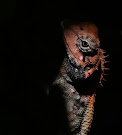Location: Valparai
Date: Sept 22nd to 26th, 2025.
To get there: From Bangalore via Krishnagiri Erode, Coimbatore(bypass), Pollachi or via Kollegal then Erode. Buses are also connected but you may have to change at Coimbatore or Pollachi. We took the Krishnagiri route when going and Kollegal while coming back where we got stuck on the narrower Sathyamangalam ghat section which allows huge transport vehicles. The ghat section from Pollachi to Valparai is a lovely drive with great views and well designed 40 hairpin bends each named after mostly birds and some animals using large boards.
Distance: Approx. 450km, 9hrs by car.
Facilities: It is quite a large hill town similar to Ooty with mostly tea estates all around.
 |
| Bird watchers nest at Vellode |
To manage the long 9 hours drive, we planned a stop at Erode and spent couple of hours in Vellode Bird Sanctuary. This gave us a glimpse to this well managed water body that hosts migrants as well as give us the much needed break. The ducks had not arrived yet but we did spot the Blue-tailed King fisher as our migrant.
.jpeg) |
| Valparai |
The ghat section with 40 hairpins was a lovely drive from Pollachi to Valparai. Its just 40 kms but takes nearly 2 hrs. Road was wide, well maintained with good views though no proper view points where we could stop and enjoy. Each bend was named after an western ghat bird or animal and few as a tribute to persons/places, I think. A lovely way to educate as well as make the drive fun.
We had decided on tea bungalows for our stay so that we would be away from the main city and enjoy the quietness of tea estates. First 2 nights were in a wooden chalet at Sirukundram managed by Briar group, next 2 nights were in the bungalow at Rotti Kadai, managed by Murugappa group under Sinna Dorai brand.
 |
| Sambar deer |
 |
| Blue-bearded Bee-eater |
 |
| Great Hornbills |
 |
| Emerald Dove |
 |
| Lion-tailed Macaque |
We did some walks in few other recommended places with limited sightings probably because of the dull rainy weather or we just were not lucky. On mammals, we spotted Indian Gaur all over the Rotti Kadai estates, Lion-tailed Macaque, Nilgiri Langur, Stripe-necked Mongoose, Sambar Deer, Jungle (Western ghats) palm squirrel, Indian (Malabar) Giant squirrel.
 |
| Indian Gaurs |
Overall, we enjoyed this location very much. We hardly spent any time in the city. Just drove through it few times. It looked crowded. The tea estates, bungalow surroundings, and birding places were quiet and relaxing. Lets just say tranquil! One can easily spend a few hours just watching and walking around in nature trails within estates or near them. For nature lovers, a visit to Annamalai Nature information center is a must with this wonderful exhibits. There is also a path along side it for some bird watching.
Check out the photo album from the trip.
Ebird check lists with bird images.
Vellode Bird Sanctuary
Puthu Thotam Estate
Sirikundram Bungalow area
Moulmein Estate bird walk
Thenmalai Fragment








































